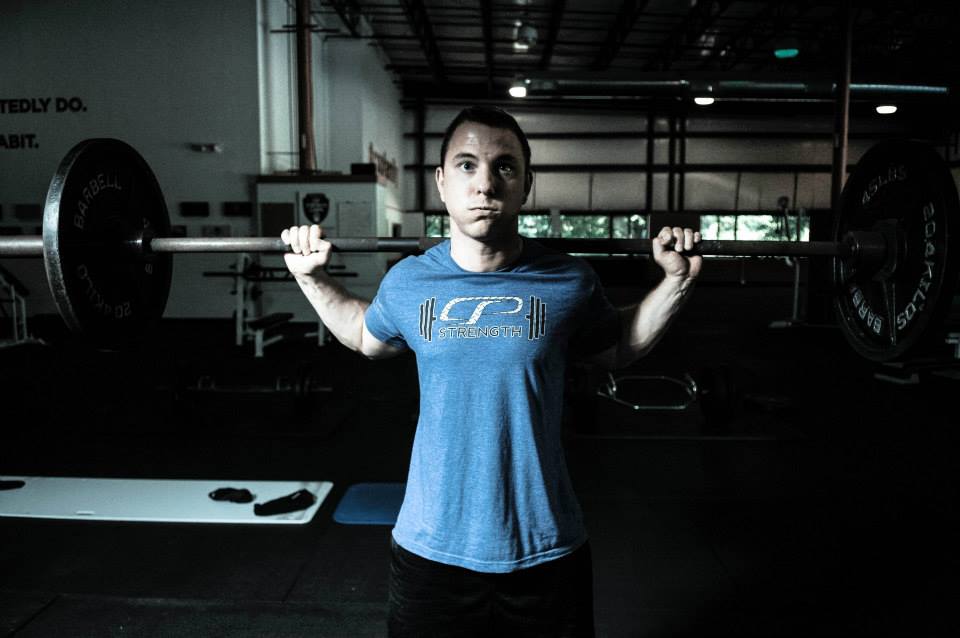With Avengers: End Game right around the corner it’s inevitable we’re going to be inundated with articles, interviews, and videos on how to get a Thor or Black Widow bod.
Follow “x” routine, and you too can look like a superhero.
To be fair: I have nothing against said routines. Pretty much anything will get someone lean(er) if they stay consistent and not eat like an asshole.
That said, I think one of the biggest mistakes people make when their goal is getting lean, is not placing a premium on strength.
What inevitably ends up happening is someone will crank up their training volume (lots of high-rep sets compounded with endless amounts of cardio) in addition to hopping onto the Keto train.
And while I’m not here to say that that approach is fruitless (<— ha, pun intended1, dumb, or won’t work – it probably will, for a stretch – I’m also a realist, and have seen with my own eyes the same thing happen time and time and time again.
Which is…(?)
A week, or two, or three (hell, maybe several) go by and you feel great. Your body fat is melting off, you can see some abs, and you can sense the inevitable influx of Tinder matches.
And then, you know, you don’t feel so hot.
You’re lethargic, you’re cold, you’re achy, and your motivation to train wanes.
The high volume of training tethered with a low-calorie/low carb diet begins to take its toll. You’re starting to think that the reason Wolverine is so angry all the time isn’t because he discovered some nefarious government conspiracy to turn him into a mutant and control his life.
No, rather, the reason he’s so angry all the time is – despite being ripped and the envy of fanboys everywhere – he’s sick and tired of all the EMOM sets of burpees and he just WANTS…SOME…FUCKING…CARBS.
Again, to reiterate, this is NOT to insinuate that all the popular programs people follow to lose fat and get lean are a waste of time.
However, what I am suggesting is a slight re-frame or paradigm shift.
What Makes Muscle, Keeps Muscle
Even if fat loss and getting lean is someone’s goal, if they hire me as their coach I’m still going to have them strength train.
Maybe it’s the dumb meathead strength coach in me talking, but I strongly feel the bulk of anyone’s fat loss is going to stem from making dietary/nutritional adjustments.
Namely: Figuring out what strategy or approach will elicit a caloric deficit.
This, of course, can be highly individual. Some people do well with Keto (although, I’d argue most people who think they’re doing Keto are really just following a low-carb diet), some do well with Paleo, some do well with Intermittent Fasting, some do well, with, I don’t know, pick something.
The point is, the main determining factor of whether or not a diet will actually “stick” is whether or not someone will follow through and stay consistent with it.
Not to mention it should fit their lifestyle and goal(s).
But I don’t want to go down that rabbit hole of clusterfuckery. Too many mental gymnastics for me to deal with at this stage in the day.
I do, however, want to pontificate and persuade you on the merits of STRENGTH TRAINING with regards to getting lean.
While dieting the idea of strength training isn’t so much to build strength as it is to MAINTAIN as much muscle as possible while in a caloric deficit. It’s important to give the body the stimulus it needs to hold onto as much of it as possible during this time.
What makes muscle, keeps muscle.
And what accomplishes that is low(er)-rep, strength training.
Again (again), I’m not saying incorporating things like density sets, finishers, circuits, HIIT style training, or anything in between doesn’t have its place or serve a purpose; they all, indeed, can help expedite the process.
[But this is also why I feel one’s nutrition is going to be the main determinant when it comes to fat loss].
All I’m saying is, from my vantage point, people tend to place too much emphasis on all of the above protocols and unwittingly end up losing muscle rather than keeping it.
Many people (not all) end up becoming a smaller, weaker version of their original selves.
I do not want this to happen, and I feel there’s a simple way to prevent it.
It doesn’t have to be a complicated “thing” either. The obvious question, then, is how would I go about writing a program for someone in this situation?
Easy.
Have him or her hit a challenging set of 3-5 reps (maybe the occasional heavy single for more advanced lifters) a few times per week using the obvious exercises – think: deadlift, squat, bench press – and carry on with your traditional fat-loss programming self.
Example Muscle Maintaining Program (Not Fat Loss Program)
Day 1
A. Work up to a challenging set of FIVE on a Squat Variation (Front, Back, Zercher, Anderson, Safety Bar Squat)
B1. Same Squat Variation (same load you hit for 5 reps): 3×3
B2. DB Bench Press: 3×8
C1. DB Romanian Deadlift
C2. Push-Ups
C3. Gripless FacePulls
- 8-10 reps each, 10 Minute Density Circuit
D1. 1-Legged Hip Thrust
D2. DB Curls
- 10-15 reps each. 8 Minute Density Circuit
Day 2
A. Work up to a challenging set of FIVE on a Bench Variation (Regular, Close Grip, Decline, Incline, Larsen)
B1. Same Bench Variation (same load you hit for 5 reps): 3×3
B2. 1-Arm DB Row: 3×10/arm
C1. Goblet Squat
C2. Pull-Through
C3. Reverse Crunch
- 8-10 reps each, 10 Minute Density Circuit
D1. Prone, Incline Reverse Flye
D2. Tricep French Press
- 10-15 reps each, 8 Minute Density Circuit
Day 3
A. Work up to a challenging set of FIVE on a Deadlift Variation (Conventional, Sumo, Trap Bar, Block Pull)
B1. Same DL Variation (same load you hit for 5 reps): 3×3
B2. 2-KB Racked Carry: 3×30 yds
C1. Chest Supported Row
C2. Goblet Reverse Lunge
C3. Band Reverse Flye Walkout
- 8-10 reps each, 10 Minute Density Set.
C1. 2-Arm Landmine Press OR DB Push Press
C2. Bodyweight Step-Ups
- 10-15 reps each, 8 Minute Density Set
See?
Nothing crazy.
This doesn’t need to be more complicated than it has to be. We’re not doing long-division here.
Keep….it….simple.
Work your ass off. But keep it simple.
All these workouts can be completed in less than 60 minutes (including a warm-up).
It’s likely this approach is in stark contrast to what many are used to seeing when it comes to a fat-loss program; no tantric length, more is better, workout palooza.
Assuming one’s diet is in check, this approach is all that’s needed to help keep muscle…which should be the goal in the long-run anyway.





